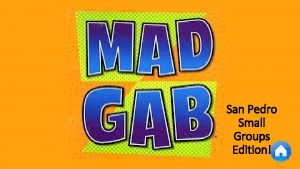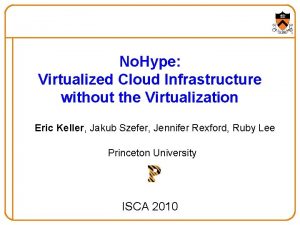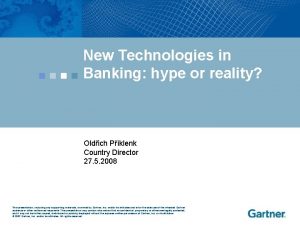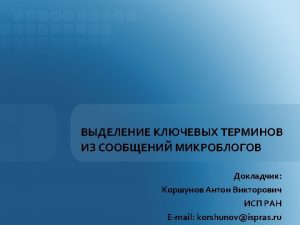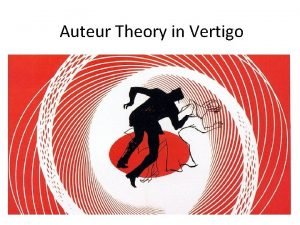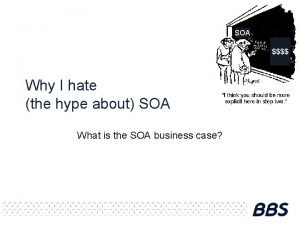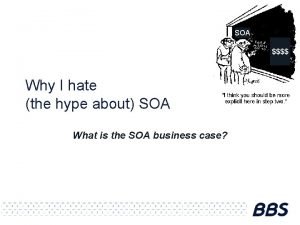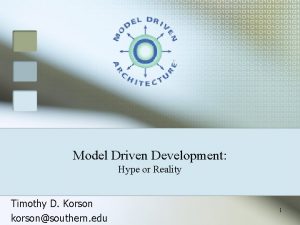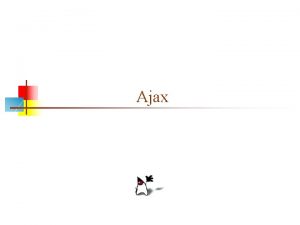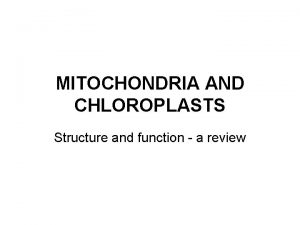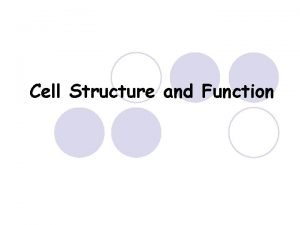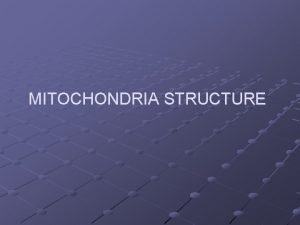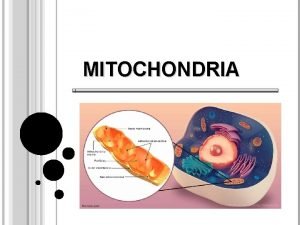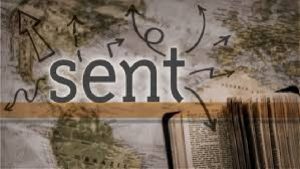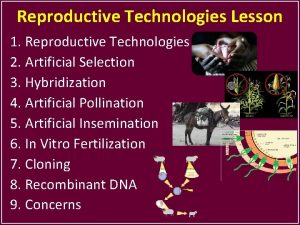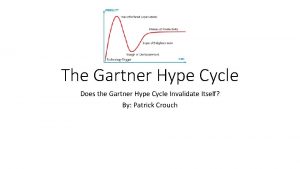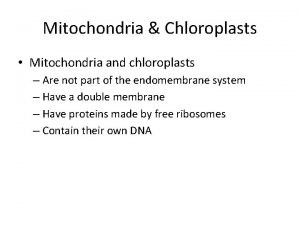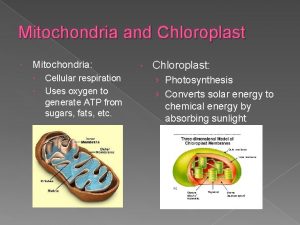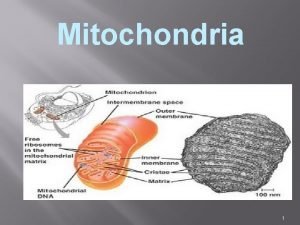The hope and hype of reproductive technologies mitochondria













- Slides: 13

The hope (and hype) of reproductive technologies: mitochondria disease and techniques of mitochondria donation Dr Rebecca Dimond. R 1@Cardiff. ac. uk Cardiff School of Social Sciences ESRC Future Research Leaders



Mail. Online David Derbyshire Jun 30 2011

Ethical issues: Is mitochondria donation the same as egg/sperm donation or organ/tissue donation? How might mitochondrial DNA be associated with a person’s identity? What would be the relationship between child and mitochondria donor? Is it acceptable to sanction experimental reproductive techniques? Is germ-line modification acceptable?

1. 24 (p 13) Department of Health consultation The dominant DNA (the nuclear DNA) in any child born from these new techniques would be that of the mother and the man providing the sperm (usually the father). Although it would be the case that DNA from three people (the mother, the man providing the sperm and the egg donor) would be present in the child, only a tiny percentage of the child’s DNA would be from the egg donor. Most importantly, the residual DNA from the donor would only be mitochondrial DNA so would not affect the resulting child’s personal characteristics and traits. This is because mt DNA only contains genes that are essential for normal mitochondrial function; personal characteristics and traits are derived from the nuclear material.

“although the mitochondrial DNA is around only 0. 1% of a person’s total DNA, a little leavens all the bread, and a different person is thereby created” Jacob Rees-Mogg Parliamentary debate 12 th March 2014



Sunderland mum prays new procedure spares other families the anguish of tragic baby deaths Sunderland Echo 25 January 2012 "I wasn't diagnosed until after my fifth baby had died, no one knew why it was happening, they had no answers. I would get pregnant again and just pray this time would be different. My mum sat me down and told me it had happened to her. The previous generation lost 11 children in total. It will be too late for me but it would be an amazing thing if scientists and doctors can prevent this in the future. ” Sharon Bernardi

I knew there was thing within the family and it was making the people poorly, and it was genetic, but that was it. I didn't really take much interest in it. I didn't know a lot about it to be fair. Then when my mum started to have the fits, really that was kind of, hold on a second, I didn't realise this was going to be so serious. . . [woman age 35]

Why is Mitochondria Donation sociologically interesting? • Challenges the iconic status of the ‘gene’ • Construction and representation of diagnostic classifications • How do women with mitochondrial disease make reproductive decisions • The grounded experience of health and illness – – • • Lay understandings of genetic risk Diagnosis as biographical disruption Familial communication patterns, stigma and secrets Normalisation The role of the ‘expert patient’ ‘Political economy of hope’ Produces new opportunities for understanding ‘kinship’ A reminder that “technology does not speak for itself”

Conclusions and thoughts for future • What is the significance of genetic material? • What kinds of relationships might be formed through mitochondrial donation? - and what will happen in practice? • How do women with mitochondrial disease and their partners make reproductive decisions? • What are the implications of the development of reproductive technologies on patients, their experience and their decisions? [gendered technology] Thank you for listening Dimond. R 1@Cardiff. ac. uk
 Eggs hearse sized hay lee
Eggs hearse sized hay lee Computing hype problem
Computing hype problem No hype management
No hype management Gartner hype cycle banking
Gartner hype cycle banking Gartner hype cycle 2009
Gartner hype cycle 2009 Auteur theory
Auteur theory I hate hype
I hate hype I hate hype
I hate hype Glimmerglass optical switch
Glimmerglass optical switch Hype driven development
Hype driven development Brandon valeriano
Brandon valeriano Hype nn
Hype nn Structure and function of mitochondria
Structure and function of mitochondria What is the function of smooth endoplasmic reticulum
What is the function of smooth endoplasmic reticulum
